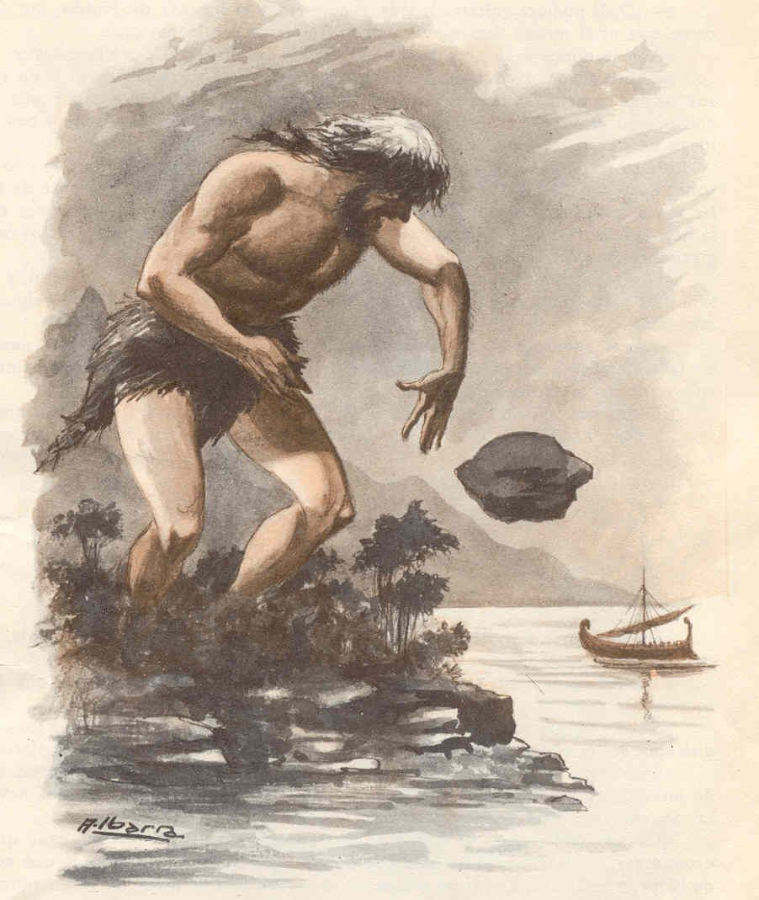In Greek mythology, the Laestrygonians were a tribe of man-eating giants. They were said to have sprung from Laestrygon, son of Poseidon. Odysseus, the main character of Homer’s Odyssey, visited them during his journey back home to Ithaca. The giants ate many of Odysseus’s men and destroyed eleven of his twelve ships by launching rocks from high cliffs. Odysseus’s ship was not destroyed because it was hidden in a cove near shore. Everyone on Odysseus’s ship survived the incident. “His soldiers, with a dozen ships, arrive at ‘the rocky stronghold of Lamos: Telepylus, the city of the Laestrygonians’.”
| Alias Laestrygonians |
| Real Names/Alt Names Laestrygonians |
| Characteristics Myths & Legends, Giant, Prehuman Epoch |
| Creators/Key Contributors Homer |
| First Appearance Greek mythology |
| First Publisher ○ |
| Appearance List Literature: Homer’s Odyssey (c. 8th century BCE, English 1614), Homer’s Iliad (c. 8th century BC), Virgil’s Aeneid (29 to 19 BC), 5th century plays by Aeschylus, Sophocles (Ajax, Philoctetes), and Euripides (Hecuba, Rhesus, Cyclops), Plato’s Hippias Minor, Shakespeare’s Troilus and Cressida (1602), Dante Alighieri’s Divine Comedy (1308–1320), Lord Tennyson’s “Ulysses” (1842), The Story of Greece: Told to Boys and Girls by Mary Macgregor (191-?) [Internet Archive], Frederick Rolfe’s The Weird of the Wanderer (1912), James Joyce’s Ulysses (1918–1920), Nikos Kazantzakis’ The Odyssey: A Modern Sequel (1938), Eyvind Johnson’s Return to Ithaca (1946), The Luck of Troy (1961), et. al. Film: The Mysterious Island (1905), L’Odissea (1911), Ulysses (1954), Ulysses (1955), The Trojan Horse (1961), The Fury of Achilles (1962), Ulysses Against the Son of Hercules (1962), The Lion of Thebes (1964), et. al. Comics: Blue Bolt vol. 2 #1-2, Treasure Chest vol. 14 #5. |
| Sample Read The Odyssey (Translated by W. C. Bryant, August, 1871) [Standard eBooks] |
| Description In Greek mythology, the Laestrygonians were a tribe of man-eating giants. They were said to have sprung from Laestrygon, son of Poseidon. Odysseus, the main character of Homer’s Odyssey, visited them during his journey back home to Ithaca. The giants ate many of Odysseus’s men and destroyed eleven of his twelve ships by launching rocks from high cliffs. Odysseus’s ship was not destroyed because it was hidden in a cove near shore. Everyone on Odysseus’s ship survived the incident. “His soldiers, with a dozen ships, arrive at ‘the rocky stronghold of Lamos: Telepylus, the city of the Laestrygonians’.” |
| Source Laestrygonians – Wikipedia |

